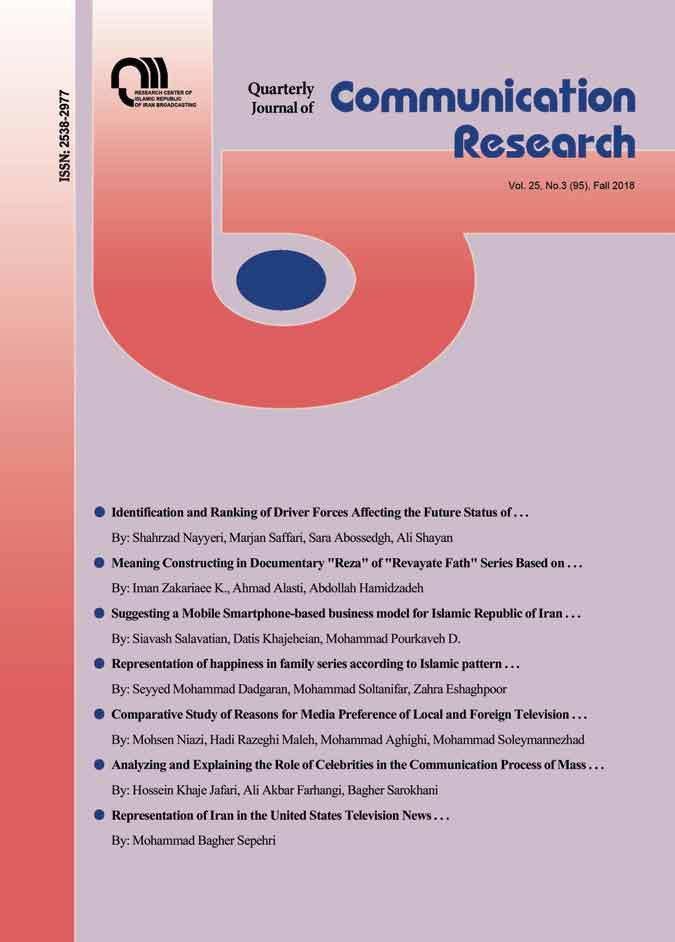Fairclough, N. (2000). Critical discourse analysis (translating Group. Trans.). Tehran: Bureau of Media Studies and Planning. (Original work published 1995).
Forqani1, M. M. & Ahmadi, A. (2011). Building image for Islamic republic of Iran nuclear activities in worldwide TV Channels. Journal of communication research, 18 (30).
Ghandhari, S. (2018). What is Islamophobia and what is the consequences? Site of Setareh. Retrieved from http://WWW.setare.com/fa/news/9878
Hall, S. (2005). The local and the global: globalization and ethnicity. In book: Culture, Globalization and the World-System, pp.19-39 (Barekat, B. Trans.). Tehran: journal of Arghanoon, 24. (Original work published 1991).
Mahdizadeh, S. M. (2004). Representation of Iran in western press: critical discourse analysis on New York Times, Guardian, Le Monde, de Volt in 1997-2000. (Doctoral thesis). Allameh Tabtabaei University, Tehran.
Mahdizadeh, S.M. (2000). Media and representation. Bureau of Media Studies and Planning Pub.
Mohammadi Foumani, H. (2014). The World Involved in Western Islamophobia and Eastern Shiite fear. Retrieved from Site Shafaghna.
Morgenthau, H. J. (2014). Politics among nations: the struggle for power and peace (Moshirzadeh, H. Trans.). Tehran: Ministry of Foreign Affairs.
Motaghi, E. & Balazadeh, M. (2013). The impact of US public diplomacy on the national security of the Islamic Republic of Iran. Journal of Management and defense research, 12 (73).
Naghib Sadat, S. R. (2009). Linguistics and its function in news. Journal of Sociology, 24.
Persian Gulf Studies Center. (2010). Persian Gulf Arabs and purchasing weapons. Retrieved from, http://www.persiangulfstudies.com/fa/index.asp?p=pages&id=739
Pirnajmoddin, H.; Marandi, S. M. & Adeli, M. R. (2010). Orientalist Discourse in western media representations of Iran. Journal of Iranian Cultural Research, 3 (2).
Sharafodin, S. H. & Kouhi, A. (2016). Changing the principle of objectivity and impartiality in the professional ethics of media. Journal of religion and Cultural Policy.
Tajik, M. R. & Ramezannejad, J. (2014). Discourse Analysis of BBC Persian TV Channel on Iraq-Iran War (case study: two documentaries). Journal of Rasaneh, 25 (1).
Welch, D. (1990). Propaganda and the German Cinema, 1933 - 1945 (Afshar, H. Trans.). Tehran: Markaz Pub.

